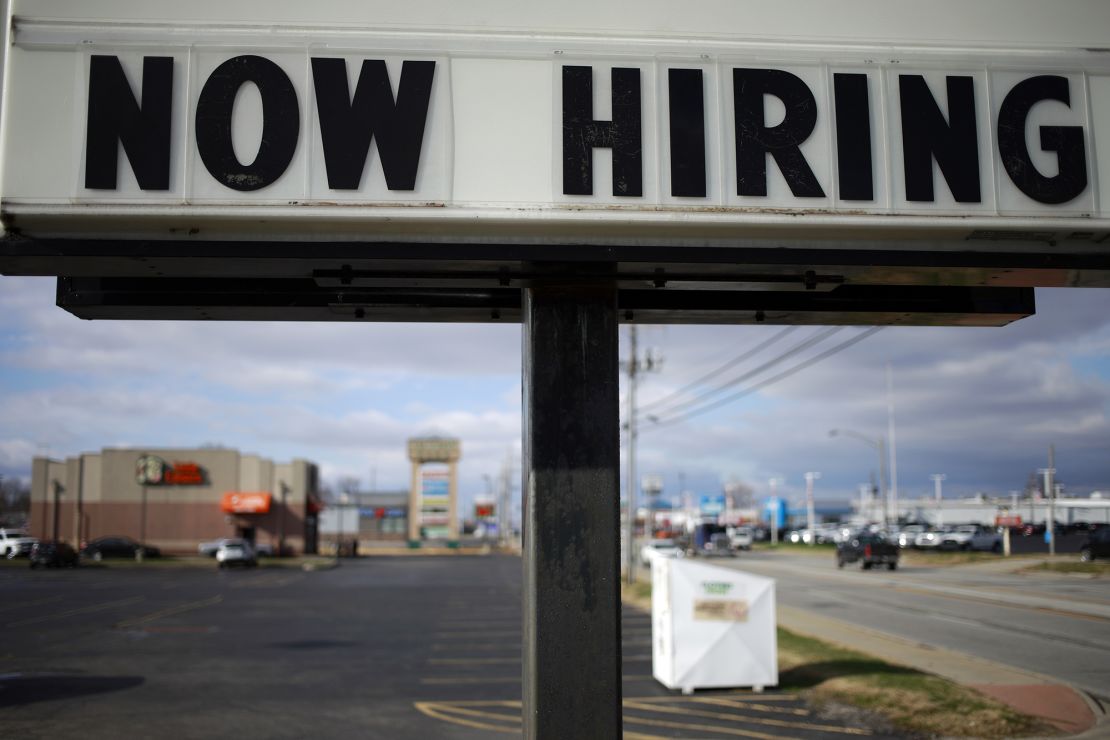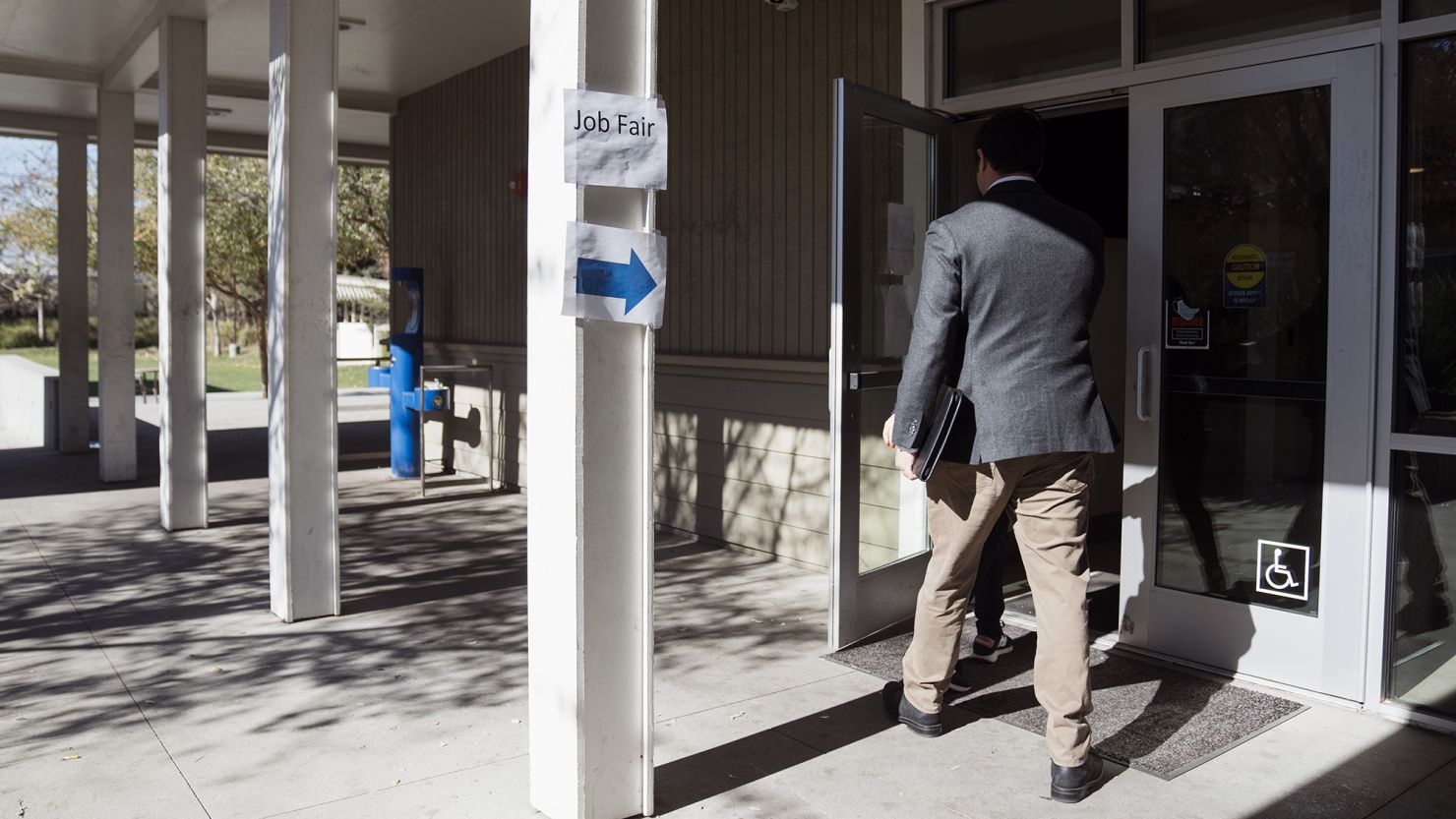For the past 50 years, the US unemployment rate has mostly been far above 4%, even rocketing to almost 15% during the pandemic. Yet in the turbulent period that followed lockdowns and other economic disruptions from the pandemic, it has stayed below the 4% level for more than two years.
That remarkable streak could end on Friday at 8:30 a.m. ET, when the Bureau of Labor Statistics releases its March jobs report.
February brought the unemployment rate within spitting distance of 4%, rising to 3.9% from 3.7% in January. And for March, it’s “very foreseeable” that the jobless rate could reach 4%, said Michael Strain, director of economic policy studies at the American Enterprise Institute.
While that wouldn’t represent an especially significant leap, it is likely to make headlines because many economists feel there is a “broader symbolic meaning” attached to no longer having an unemployment rate below 4%, he said.
What could come from Friday’s jobs report
February’s jobs report came as yet another surprise to economists. Instead of the 200,000 job gains they forecasted, employers hired 275,000 workers.
Economists’ February forecast might not be that far off, however. As has been the case with many recent job reports, the number of positions the BLS initially estimated were added in prior months can be revised down substantially.
For instance, last month January’s job gains were revised down to 229,000 from the blowout 353,000 that kicked off 2024.
Economists are once again predicting 200,000 job gains last month, according to FactSet consensus estimates.
Federal Reserve officials will likely be paying close attention to the pace of wage growth. That’s because faster wage growth can usher in higher overall prices since it means consumers have more money to spend.
Last month it slowed slightly, and economists are expecting that progress to continue.
Fewer people are quitting their jobs: BLS data released Tuesday showed that February’s quits rate (voluntary separations as a percentage of employment) remained low. Higher quit rates typically correlate to higher wage and price inflation pressures.
At the same time, layoff activity hasn’t spiked.
Last month, the number of job cuts announced by US-based firms held mostly steady with the activity in March 2023, according to new data released Thursday from outplacement and research firm Challenger, Gray & Christmas.
Layoff announcements picked up last month by about 7%. However, that’s an increase of just 0.7% year on year, according to Challenger.
Through the first quarter of this year, layoff announcements are down 5% from the first three months of 2023.
“Many companies appear to be reverting to a ‘do more with less’ approach,” Andy Challenger, senior vice president of Challenger, Gray & Christmas, said in a statement. “While technology continues to lead all industries so far this year, several industries, including energy and industrial manufacturing, are cutting more jobs this year than last.”
The latest weekly jobless claims released Thursday by the Department of Labor released showed that initial applications for unemployment benefits climbed to a nine-week high of 221,000, slightly above expectations. However, the number of people who were already collecting unemployment benefits fell by 19,000 to 1.79 million.
What makes the unemployment rate go up?
While some economists are expecting the unemployment rate to fall to 3.8% in March, that prediction should be taken with a grain of salt — the forecast for the February unemployment rate was 3.7%.
By definition, the unemployment rate captures the share of unemployed people as a percentage of the labor force. The labor force is the total number of people employed and unemployed. To be considered unemployed, you don’t necessarily need to have been laid off recently.
The BLS classifies someone as unemployed if they aren’t working but are available for work and made a specific effort in the past month to find a job. If they don’t satisfy that criteria, they aren’t considered part of the labor force.
Mathematically, the unemployment rate can increase in a month for a variety of reasons.
One is when both the share of unemployed and employed people disproportionately rises. That could happen in a situation when, for example, a lot of college graduates start working, but at the same time previously employed people are laid off.
Another is if the number of unemployed people is relatively unchanged from one month to the next but the number of employed people falls. That could happen if, for instance, a lot of people retire.
It can also go up when the number of unemployed people climbs and the number of employed people falls. That’s what happened in February.
The direction of the unemployment rate in one month is entirely independent of the headline payroll employment number because the two come from different surveys. That explains why the unemployment rate rose to 3.9% in February despite the 275,000 job gains that were well above economists’ expectations.

So it’s not automatically a bad sign for the economy when the unemployment rate goes up. But if the unemployment rate increased to 4% last month and the pace of job gains slowed significantly from February, that would be “a pretty clear indication the economy is softening,” said Strain.
What a 4% unemployment rate says about the economy
If, however, the unemployment rate hits 4%, “it signals workers losing some of their extremely strong leverage in the labor market,” said Aaron Sojourner, a labor economist at the W.E. Upjohn Institute for Employment Research.
January 2022 was the last time the unemployment rate was at 4%; and November 2021 was the last time the unemployment rate topped 4%, when the sudden influx of pent-up demand from the pandemic meant companies were desperate to hire. As a result, workers saw unprecedented wage increases.
But those increases have been slowing and workers have lost some of the leverage they gained, according to a model Sojourner developed. Nevertheless, workers have a lot more leverage now than they’ve had over much of the past 20 years.
The loss of some leverage, combined with a rising unemployment rate, implies that employers can hire and retain talent less expensively, Sojourner told CNN.

How has the unemployment rate stayed below 4% for so long?
Once the Federal Reserve began hiking interest rates two years ago to rein in 40-year high inflation, economists predicted the unemployment rate would soon hit 4%.
Strain, for instance, said he thought the unemployment rate would have been well into the 4% range, if not higher, by the second quarter of this year.
That didn’t happen in part because consumer spending remained strong, a byproduct of the unprecedented level of government stimulus during the pandemic.
Additionally, a practice known as “labor hoarding,” where employers keep employees on the payroll to ensure they’re properly staffed after the economy recovers from a potential recession, has also helped keep the unemployment rate low.
But just because the unemployment rate hasn’t hit 4% doesn’t mean the labor market isn’t cooling. Spoiler alert: It is.
The unemployment rate went up by half a percentage point from the post-pandemic low of 3.4% last April. The pace of monthly job gains have slown significantly over the last two years. And layoffs are rising, according to job openings and labor turnover data the BLS released Tuesday.
CNN’s Alicia Wallace contributed to this story.





